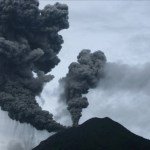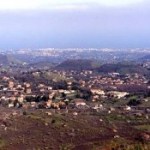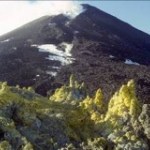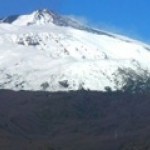italy
If any of you are bloggers out there who like to write about studies, have you ever decided that you wanted to write about a study and discovered as you started writing that your university doesn't have access to the journal? Yeah, that happened to me last night. I had wanted to move on from writing about antivaccine nonsense, as it seems that that's all I've been writing about for the last several days (probably because it almost is), but I couldn't because I couldn't count on someone getting me a copy soon enough to be able to write about it last night. So until I get a hold of the paper…
Stem cells are magical, mystical things that can't be explained.
At least, if you listen to what docs and "practitioners" who run stem cell clinics in various parts of the world, usually where regulation is lax and money from First World clientele is much sought after, that's what you could easily come to believe. Unfortunately, it's not just Third World countries in which "stem cell clinics" have proliferated. For instance, they are not nearly uncommon enough in Europe. The example that is most troubling right now is Italy, and the reason is that there is currently a law being considered…
Given how many bloggers have already weighed in on the story of an Italian court convicting geologists of manslaughter for failing to issue adequate earthquake warnings before an earthquake that devastated the town of L'Aquila, including Steve Novella, Daniela at Skepchicks, Sharon Hill at Skeptic, and even Instapundit, you'd think that even Orac wouldn't have anything to say about it. You would, of course, be wrong. Orac always has something to say about such things. The question is simply whether he decides he's interested enough in the story to take the time and effort to compose and let…
Classes starting today, so I have to be brief:
Unique twin ash plumes from Sinabung in Indonesia, erupting on August 29, 2010.
Sinabung
The Indonesian volcano continues to experience explosions, which one last night (well, last night here in Ohio) that prompted an ash advisory for aircraft up to 6,100 m / 20,000 feet, although most reports I've seen pegged the ash column at closer to 2,000 m / ~6,500 feet. Eruptions readers have found a bevy of links for footage and information about the eruption, including a remarkable image gallery from the BBC that shows the volcano exhibiting two ash…
Sorry about the lack of posts - I've been not only frantically prepping for class and my Eyja talk, but also I'm somewhat under the weather with an ill-timed sickness, so even though there is stuff to talk about, I haven't really had time/wherewithal to deal with it.
However, expect big things from Eruptions next week!
Drawing of a ship washed inland by the tsunami generated by the August 27, 1883 eruption of Krakatau.
I'll throw a few quick links:
The alert status at Galeras has been dropped back down to "orange" after the non-explosive eruption earlier this week. However, INGEOMINAS warns…
Today was a doubleheader for volcanic eruptions in the news:
Today's explosive eruption from Mt. Etna. Image courtesy of the INGV.
As I briefly mentioned earlier, Galeras in Colombia had an "atypical" eruption - apparently meaning it was non-explosive - that has prompted evacuations and a change in the alert status to "Red" for the volcano. Various news sources don't have a lot of new information yet, but you can check on the report on the INGEOMINAS page (spanish) - and they have links to some of the Galeras news (audio, spanish) from their main page. Some of the latest reports from…
The Doctor fights off a magma creature in Pompeii.
Now, most of the time I talk about why I started this blog, I talk about the eruption of Chaiten in Chile as the catalyst. However, if you look back at my archives, you'll see that one of my first posts was on the Doctor Who episode "The Fires of Pompeii" - so that might also be a good marker to point to on why I started this blog. Why do I bring this up? Well, Pompeii gets mentioned a couple times in the first few seasons of the revived Doctor Who. First off, when the Doctor meets Capt. Jack Harkness (a time-traveling huckster), Capt. Jack…
The final part of Etna Week, brought to us by guest blogger Dr. Boris Behncke. Check out Part 1 and Part 2 as well!
Etna Volcanic hazards
By guest blogger Dr. Boris Behncke.
Etna is one of the most active volcanoes on Earth, and a population of nearly one million people dwell on its flanks, many in areas that have been repeatedly invaded by lava flows during the historical period. A few villages have been constructed very close to the vents of eruptions only a few hundred years old.
Top: Residential areas surrounding numerous pyroclastic cones on the lower southeast flank of Etna, seen…
This is Part 2 of 3 from guest blogger Dr. Boris Behncke. Check out Part 1 here.
The current dynamics and activity of Etna
by guest blogger Dr. Boris Behncke
The recent behavior of Etna is characterized by nearly continuous eruptive activity from the summit craters and eruptions from new vents on the flanks at intervals of a few years to decades. Summit eruptions vary from quiet lava emission to mild Strombolian explosions to high-discharge-rate Hawaiian to sub-Plinian style lava and fire fountaining accompanied by the emplacement of fast-moving lava flows; usually the strongest activity…
Etna Week Part 1
Mount Etna - Brief Anatomy of an Exceptional Volcano
By guest blogger Dr. Boris Behncke.
Italy truly deserves to be called "the Cradle of Volcanology" - not only because it hosts virtually all existing types of volcanoes and volcanic rock compositions, and seven of its volcanoes have had confirmed eruptions during the historical period (i.e. the past approximately 2700 years), but also because the earliest surviving eyewitness account of an eruption was written in Italy, the first volcano observatory and the first geothermal power plant were built in Italy, and three…
Italy's Mt. Etna erupting in November 2006.
Well, I am currently off in the wilderness, but that doesn't mean that things aren't still hopping here at Eruptions. We are lucky to have Dr. Boris Behncke of the INGV Catania as that blogger and he brings us a three-part series on Mt. Etna on the island of Silicy. That means this week is Etna Week here on Eruptions, so for all of you chomping at the bit for more information on the Italian volcano, you are going to get it (and then some).
modern-day satellites who can watch that same summit from space.
I think you're all going to love this series…
Lots of little pieces of news I've run across ... time to play a little catch up.
Stromboli: A volcano after Don Ho's heart.
Every once in a while, my RSS feeds will dredge up some articles from years gone by ... and this week there were two New York Times pieces that are a few years old, but interesting nevertheless. The first is about research conducted by Dr. Robert Sohn at WHOI on explosive undersea eruptions. The second is work by Corr and Vaughan about finding subglacial volcanism in Antarctica. Both are interesting reads if you missed them (like I did) the first time around.…
Lava flows from Kilauea in Hawai`i move towards a home in Kalapana.
Whenever I think about the hazards posed by most lava flows, I tend to think about the opening scene in the Hitchhiker's Guide to the Galaxy. Developers are planning to knock our hero Arthur Dent's house down and as a last ditch effort to stop its destruction, Arthur lies down in front of the bulldozer. The demolition supervisor, a certain Mr. Prosser, at one point asks Arthur if he knows how much damage the bulldozer might suffer if he just lets it roll over poor Mr. Dent. Arthur says he doesn't know and Mr. Prosser replies…
An undated painting of the island volcano of Ischia near the Bay of Naples, Italy.
Guess what? It is the end of the semester (well, school year) here at Denison, so I might be a little busy for the next couple weeks.
Here are some news bits (with special thanks to all who emailed me some of these links):
Boris might have more information or opinion on this, but Italy is back in the news concerning the threat of volcanism to the country. This time the volcano is Ischia, off the coast in the Bay of Naples. Guido Bertolaso of Italy's civil protection agency is quoted as saying that the "magma…
Hard to believe, but there is other volcano-related news in the world ...
So, with all deference to Eyjafjallajokull, here it is:
Dome collapse on Colima in Mexico, image taken March 30, 2010.
The new Smithsonian/USGS GVP Weekly Volcano Activity Report was issued, with news about increasing signs of activity at Egon in Indonesia, a possible plume at Miyakejima in Japan and more dome growth at Soufriere Hills.
A study on the economic effect of a new Vesuvius eruption was released and the finding show the potential for a staggering $24 billion of economic damage directly related to an…
A view of the steaming Mt. Etna, taken on April 8, 2010 by Dr. Boris Behncke.
Eruptions reader and member at Italian National Institute of Geophysics and Volcanology in Catania, Dr. Boris Behncke, has been keeping many of us appraised on the goings-on at Mt. Etna. A series of earthquakes occurred on April 2-3 along a fault near the north flank of the volcano - 175 earthquakes in all producing some impressive results - and Boris has noted increased "rumblings" at Etna since. This has culminated in explosions and ash April 7-8. Most of the ash appears to be made from merely crushed rock of…
Map showing the location of submarine volcano Marsili, near the Italian coast. Image from INGV.
The subject of submarine volcanism near Italy has come up before here on Eruptions but now it has made the jump into the worldwide media after some claims made by Enzo Boschi, president of the National Institute of Geophysics and Volcanology (INGV).
The long and short of what I can tell from the articles is that Marsili, a submarine volcano in the Tyrrhenian Sea, could be a threat to create a significant tsunami that would hit Italy (amongst other Mediterranean countries). The volcano lies only…
A photograph and line drawing (left side) of the fossil dolphin Astadelphis gastaldii. The crescent-shaped line in the line drawing represents the bite of a large shark, with the red portions representing damage done directly to the bone. From Bianucci et al, 2010.
Shark attacks are events of speed and violence. When they have locked on to a prey item sharks seem to come out of nowhere, and though they can be quite gentle with their jaws (as on occasions when they are unsure about whether something is food or not) their ranks of serrated teeth can inflict a devastating amount of damage.…
tags: politics, terrorism, economics, social psychology, Red Brigades, Italy, TEDTalks, TED Talks, Loretta Napoleoni, streaming video
Loretta Napoleoni details her rare opportunity to talk to the secretive Italian Red Brigades -- an experience that sparked a lifelong interest in terrorism. She gives a behind-the-scenes look at its complex economics, revealing a surprising connection between money laundering and the US Patriot Act.
TEDTalks is a daily video podcast of the best talks and performances from the TED Conference, where the world's leading thinkers and doers give the talk of their…
Here it is, my attempt to recap a year's worth of volcanic events. By no means is this supposed to capture every event, but rather the highlight/lowlights and what most captivated me during 2009. I'll be announcing the winner of the 2009 Pliny for Volcanic Event of the Year tomorrow.
Waimangu Geothermal Valley in New Zealand, taken in January 2009 by Erik Klemetti.
January
The year started out with a trip to New Zealand (well, for me at least) and vistas of the Waimangu Valley, formed in the 1886 eruption of Tarawera on the North Island. We were also still thinking about the late 2008…




